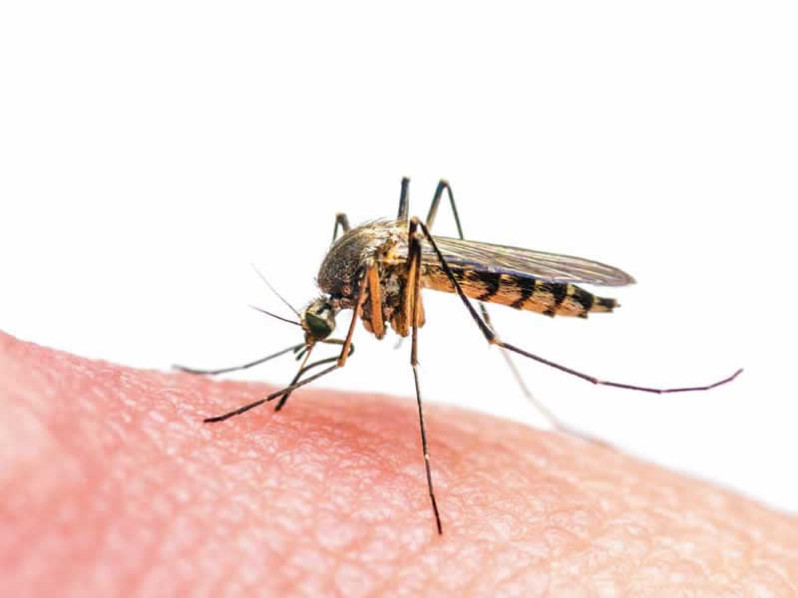By now most people are familiar with or have at least heard about the Zika virus. In fact, this latest “pandemic” drama involving a hitherto-obscure virus sounds like something the world went through not too long ago. Does the word “Ebola” come to mind?
It turns out that these pathogens have a lot in common. Both Ebola and the Zika virus came from the jungles of Africa; both originated, supposedly, from simians (i.e., monkeys); and both can safely be categorized as zoonotic (i.e., jumping from animals to humans). But just as there are several similarities, there are also some differences.
Whereas the Ebola virus is feared for its lethality (capacity to kill), to use one example, the Zika virus is rarely deadly, or so they are telling us. The fact that some pathogens are generally not lethal, though, does not mean that they can be taken lightly.
When you come to the heart of the matter, viruses don’t want to kill their hosts. What they really want to do is establish a foothold, propagate ad infinitum, and, in the process, change the host into something more favorable to viruses–preferably their “offspring” (though viruses don’t really have such a thing in the strictest sense–no, what they produce are what we might call “evolved counterparts” or copies).
One thing all viruses have in common is that they have the capacity to be dangerous, especially when they invade cells susceptible to their genetic-altering capacity. Here are 10 concerns/dangers we need to take seriously concerning the Zika virus:
1. Their main vector (the means by which they are transmitted from human to human, as well as, apparently, to other animals), the Aedes mosquito, comes in several varieties and is a hardy, daytime-biting “survivor” found in most parts of the world (except for consistenly-cold regions). This mosquito has already been implicated in the development of other febrile infirmities (e.g., dengue, West Nile, Yellow Fever, Chikungunya, etc.)–as such, it has already established itself as a dangerous pathogenic vector.
2. Zika virus disease has already established itself well in several countries and is expected to expand its way into other countries (including the US). Global warming trends, as well as unprecedented aridity in many parts of the world (meaning that these mosquitoes may have to wander in order to find new sources of water), are playing a key role in the re-distribution of insects.
Zika virus disease, in other words, is yet another problem that may be blamed on global weather changes occurring all around us. It should be noted, however, that greatly increased migration by humans is a more likely suspect in regards to the Aedes mosquitoes (the main carriers of the Zika virus) since this species is not capable of or prone to flying very far from its breeding grounds.
3. The Zika virus will, unfortunately, lead to more massive spraying of toxic and carcinogenic insecticides and pesticides. We are already finding too much of this stuff in our water (including, incredibly, the oceans), air and land. Such rampant chemical toxicity may do as much harm (in the long run) as the Zika virus. Yes, we need to find ways to combat the Aedes mosquito but, hopefully, we won’t kill ourselves in the process.
This, by the way, also goes for the insect repellents people are being told to use. For the record, all these repellents (e.g., DEET, picaridin, oil of lemon eucalyptus, IR3535, etc.) have some inherent toxic risks of their own, especially when these chemicals are applied directly unto the skin; in general, however, the more natural repellents should be given preference over synthetic chemicals.
Even the application of these chemicals on clothing and sleeping nets (meaning that you will be absorbing or breathing in their potentially toxic fumes) carries risks you need to be aware of. As such, use these chemicals with extreme caution.
4. Has the Zika virus changed its mode of transmission and virulence? This appears to be the case! When some experts began to criticize the government for apparently downplaying the dangers of the Ebola virus, the government came back with the assertion that “viruses rarely change their mode of transmission.” They said this when concerns were expressed about Ebola possibly mutating into an air-borne virus.
Well, if viruses don’t readily or easily change their mode of transmission or virulence, then some hard questions need to be asked about the Zika virus. How does a virus which not too long ago seemed so harmless all of a sudden not only appear to have changed its mode of transmission (now becoming transmissible through blood, semen, and placental fluids) but to have become much more virulent–not to mention more pathogenic?
Previously, this virus only caused a mild fever, rashes, conjunctivitis, and a few aches and pains–but, now, it appears to be able to cause microcephaly (an underdevelopment of the brain/head), Guillain-Barre syndrome (GBS), possibly a few other immuno-neurological disorders, and, in some cases, even death. If viruses don’t change that drastically (especially over such a short period of time), then some people have some explaining to do.
Could it be that this latest strain of the Zika virus has been genetically modified (either by accident or on purpose)? Shockingly, there is reason to suspect that such a thing may have happened.
Those of you who may be skeptical about this possibility need to research OX513A, the genetically modified Aedes aegypti mosquito that was, coincidentally, injected into the jungles of Brazil–again coincidentally, the country hardest hit with the new microcephaly-inducing capacity of the Zika virus. Is it possible that the genetically-modified RNA (or DNA, since the mosquito has both but the virus only sports RNA) of the new mosquito has interacted with (thereby modifying) the nucleic acid material of the virus inside these modified vectors?
Granted, this is only speculative but, when it comes to GMO technology, anything is possible, considering the thousands of variables that are at play and what little control we have over such technology once unleashed into a natural, no-holds-barred environment.
5. Why aren’t people found to be infected with the Zika virus being forcefully isolated? If the only way mosquitoes are picking up the virus (so they can inject it into other people) is by biting infected persons, then doesn’t it make sense to just isolate infected persons, especially since they supposedly remain infectious only through their very short-lasting viremic stage?
If, according to WHO and the CDC, you are infectious only for a short time (while symptomatic), then this plan would work even in areas where the plague is raging; it should certainly work in the US where, supposedly, the plague has not yet taken hold (except maybe for a handful of cases).
As in the case of Ebola, though, what we are seeing is more of a concern to be politically correct than to be epidemiologically efficient/effective. The CDC is merely telling people to stay out of infected areas overseas and to protect themselves as best as they can while in those regions. Is the government, though, simply being unusually cavalier and casual about a pandemic which, at best, appears to be highly suspicious.
Why not take a more firm and proactive approach? Rather than telling people to stop having babies (which has prompted speculation that this is yet another depopulation project through the use of bio-engineered/enhanced bugs), why not deny the mosquitoes the reservoir of blood (infected persons) without which they can’t pick up and re-transmit the virus?
Another question you may ask is “How did that first person (the “index” patient) get infected?” If the mosquito needs an infected person to start its “vector” role, then who or what infected that first person? Maybe he/she just picked it up from an animal (e.g., a rhesus monkey)–that’s one possibility; or maybe that first person was deliberately injected by someone interested in starting another world-changing pandemic?
It’s interesting to note that none of the many governments involved has made much of the possibility that the Zika virus plague may be a bioterrorism event; the fact that they haven’t only points at them directly, should that turn out to be the case in the future. After all, arsonists never bring up the word “arson” when they themselves are questioned as “witnesses” or, worse yet, if they are in charge of the so-called “investigation.”
6. There is yet no well-established incubation period for the Zika virus. This by itself should prompt some troubling questions, considering the fact that this virus has been extensively studied since the mid-1900s. It should also be noted that Zika virus disease (ZVD) outbreaks have been documented and studied before.
Needless to say, none of those outbreaks involved what we are seeing today–either in incidence, prevalence or virulence.
The fact that they are having trouble pinpointing an incubation period is yet another reason to suspect that the virus has been tampered with or, at the very least, that it has altered itself through “miraculous bio-molecular powers.” Regardless of what is involved here, not being sure about the incubation period (now suspected of being somewhere between 3 and 12 days) presents problems regarding potential treatments, epidemiological management plans, and prevention strategies.
7. How can they (the CDC, WHO, etc.) possibly explain the rather high cluster of new Zika virus-induced microcephaly cases in one country in particular: Brazil? This is the same country which, coincidentally, hosted the unleashing of genetically-modified Aedes aegipty mosquitoes supposedly meant to eradicate the Zika virus by removing these mosquitoes from the countryside.
The British company, Oxitec, that supervised this rather dangerous experiment has gone to claim that their experiment was highly successful. What exactly did they mean by “successful” and is it possible (considering that no one on earth can possibly predict how these genetic modifications will work out–for better or for worse) that the ZVD plague now seen is a result of that great experiment?
Did the modifications to the Aedes mosquitoes affect the virus in a way that made them more virulent? This is only theoretical, of course, but, again, how else can anyone explain the sudden appearance of so many microcephaly cases in one area not previously thus affected, assuming that they were indeed induced by the Zika virus.
If you are one of those many people who feels an urge to immediately defend GMO technology, then you really have a poor understanding of what said technology is capable of. Altering genes can have unforeseen consequences; beyond that, we simply have no control over GMOs once they are unleashed in a natural environment.
Stephen Hawking (recognized as a genius by most experts), in fact, has suggested that such technology could eventually render us extinct. If the recent outbreaks of microcephaly turns out to be connected to the great GMO experiment that was conducted in Brazil, then this is evidence for something (the expectation that GMO technology may do more harm than good) that isn’t that farfetched, considering how little we understand the technology we are literally pushing on Mother Nature–as if we had the knowledge and skill to improve things we scarcely understand!
For the record, Oxitec should have conducted their little experiment in a smaller, more-easily-controlled environment–preferably in a lab setting (such as maybe an enclosed biosphere). It’s difficult to believe that these people didn’t realize that if their little experiment had bad repercussions there was no way for them to take back their bio-engineered hocus-pocus. Or maybe they fully realized this and a “bad outcome” was part of the course?
The fact that the neither the CDC nor WHO has considered these possibilities only points to some kind of a sinister agenda that easily leaves some of us (with a conscience) scratching our heads; or is it possible that they just didn’t think of these possibilities?–in which case, we owe them an apology for questioning both their motives and their scientific competence!
8. Zika virus disease (ZVD) presents a differential diagnosis (i.e., “other potential diagnoses” for a suspected condition) nightmare for most physicians. Simply put, it will not be very easy for doctors to diagnose ZVD in the US and in other areas not used to tropical diseases. For one thing, other tropical diseases (e.g., dengue) can present the same symptoms as ZVD.
Beyond that, the tests used to confirm the disease (which, by the way, should preferably be performed while the patient is symptomatic–this doesn’t leave doctors a very wide window within which to get it right) are expensive, complicated, highly-specialized and not necessarily conclusive–meaning that false positives are not only possible but likely, as in the case of people who have been vaccinated against other flavivirus diseases (Yellow Fever, West Nile, chikungunya, etc.) or have been infected with such viruses in the past (in spite of not getting sick), most probably without their knowledge.
The complications of ZVD, furthermore, can also be inflicted by other culprits. Microcephaly, for example, can be attributed to a long list of other possibilities. This can also be true about any autoimmune/neurological disorder now feared to possibly be tied to ZVD.
9. The services and treatments that babies with microcephaly will need are extensive, expensive and, what is worse, not of a curative nature–in other words, children afflicted with microcephaly suffer permanent and usually-extensive debilitating and quality-of-life-reducing damage. The prospects are so bad, in fact, that this pandemic may lead to a massive wave of abortions (for those cases where parents will be foretold of what they can expect).
It should be noted, however, that microcephaly is not necessarily easy to diagnose. Also, it’s possible that a child with microcephaly (especially a mild case thereof) can function at a level above predicted or deemed low-quality- of-life.
10. The fact that about 80% of people who get infected with the Zika virus remain asymptomatic does not necessarily mean that these people cannot suffer some long-term or as-yet unidentified medical complication in the future. There is also no guarantee that they may not become infectious in the future. It is assumed that these people become immune and the virus permanently vacates their cells but, again, this cannot be guaranteed with 100% certainty.
In the world of viruses, there is such a thing as latency or dormancy, as in the case of HIV; also immunity, if any, would apply only for the strain that infected the person originally. Any new strain of the same virus can, in theory, re-infect said person, this time changing (perhaps drastically) the outcome of said infection.
11. There is, officially, neither a treatment nor a vaccine for ZVD. Some critics are asserting, though, that the introduction of a supposedly “world-saving vaccine” is the real agenda behind ZVD–just as it was for the Ebola virus.
What exactly will the vaccine to be introduced do to people? Will it eradicate (by curing) ZVD or will it set off an even more virulent version of the virus? Such a man-induced pandemic might reduce greatly global population levels–maybe to a more manageable total?
There are powerful people on this planet who don’t believe that the planet can support the 10+ billion people soon expected to live on this planet. If fish and other sea creatures continue to die out; if the bees reach an extinction status; if we continue to pour concrete over arable land; if we refuse to stop the rampant pollution now taking place; if we continue to allow massive amounts of (Fukushima, TMI, Chernobyl, etc.) radiation (something which we can’t possibly clean up) to affect our water, land and air–then maybe these de-population super-rich god-wannabes are right.
A vaccine intended to save us from a deliberately-staged “plague” might be the tool (if, instead, it turns out to be something that kills a few billion people) we need to reduce global population to a more manageable level. Of course, some people would call that “mass murder” or “genocide” but such words require believe in spiritual consequences, in justice, in human rights, and in other such purely theoretical concepts.
It also assumes that everyone (especially people in high places) has a conscience. Naturally, these are beliefs and assumptions not everyone on this planet shares.
Conclusion
The Zika virus may be merely another potentially devastating problem which may not turn out to be as bad as some people have predicted. On the other hand, it may turn out to be even worse than predicted. That appears to be the nature of viruses–in essence, no one can anticipate what they will do or how they may affect us in both the short and the long run.
What we can be sure of is that what we do about this latest global challenge will matter in the end. Granted, some things are out of our immediate control, but there is plenty that we can do about disease containment, once we identify and closely scrutinize outbreaks and pandemics.
The question is “Are we going to do the right things in regards to ZVD or is this something that may eventually overwhelm us, like the dozens of other major global problems now threateing human existence?”
Copyright, 2016. Fred Fletcher. All rights reserved.
Article Courtesy Fred Fletcher for Wellness.com














